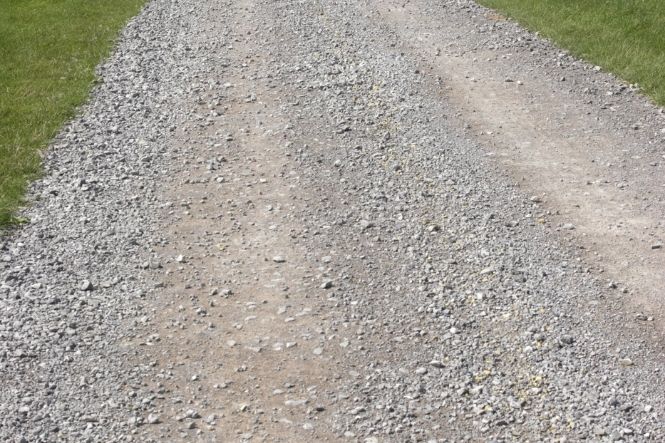We are often asked about gravel drives, from different types of gravel drive to its construction and maintenance. Looking after a drive is necessary to prolong its life and keep it looking good.
Gravel has had something of a resurgence as a material for gardens and driveways because it’s touted as a low-maintenance surface. This doesn’t mean that it’s a no maintenance surface though, and a little regular work is required to keep it looking and performing at its best.
There are three main problems with a gravel driveway, at least in terms of maintenance:
- Weeds
- Spreading
- Bedding in
We’ll take these in order of severity.
Table of Contents
Weed Control
Although weeds are probably the biggest enemy of a gravel drive, they are the easiest to control, which is why they come first in this list. Prevention is better than cure, so the best option is to put a weed barrier down under the gravel before you lay it.
A weed barrier will stop weeds like dandelions putting down deep tap roots, but it won’t stop weeds with lightweight root systems getting a hold on the gravel layer and spreading their roots horizontally. There are two ways you can deal with this – weedkiller and hand weeding, or a combination of both.
Weedkiller versus Hand Weeding
Many people don’t like using weedkiller, as it means poisons get into the food chain through insects, birds and then further up. Fortunately weeding gravel by hand is easy, provided that you do it frequently. You have to wait for the weeds to establish themselves a little, but not too much.
There needs to be enough of each weed to be able to grip the stem and be sure of removing the whole root, but not so much that it becomes difficult to remove. If you let any weed get this far, there is a risk that the root system will break off, leaving some behind that can regrow into a new plant.
For those who have no qualms about using weedkiller, there is a variety of products on the market and spraying three or four times in the spring and summer should be enough to keep weeds at bay. If you want to use a combination approach, spray at the beginning of spring and then check and weed by hand once a month until the autumn. This should keep a driveway weed free all year round.
Spreading of Gravel Driveways
Spreading refers to the tendency of the gravel to move sideways as it is walked on or driven over. To be honest, spreading is not too much of a problem for a driveway, although it does mean that you may have to top it up a little sooner than you would have otherwise. The real danger with spreading is that gravel gets into areas that it shouldn’t do.
If you have lawns next to the driveway, this can mean expensive repairs to mowing equipment. There is also potential for damage to people and property if gravel gets spat out at speed by a mower. Gravel can also spread onto pathways and this can cause problems if they are hard surfaces. A piece of gravel will roll underfoot if it is on a smooth, solid surface, leading to trips and falls.
There is little that can be done to stop gravel spreading, although regular maintenance can prevent it from being a problem. Inspect the outer areas of the drive regularly and use a rake to bring gravel back onto the drive. If there is a lot of it, which is likely with a new or topped up drive, use it to fill any depressions or bald patches that have developed.
Gravel Bedding in
Bedding in is the settling of the gravel in the areas where it takes a lot of traffic. You do actually need a bit of bedding in as it causes the individual bits of gravel to bind together which in itself prevents spreading. After a time you will notice tyre tracks appearing and when it gets to that point, drainage becomes poor and any hollows that develop fill with rain, leading to a breakdown in the driveway surface.
You have two options for dealing with this: breaking up the smooth surface into granules again and allowing it to bed back down; or topping up with new gravel. Topping up is necessary anyway, depending on how much the driveway is used, although it’s frequently years between each application.
Top up to Keep Your Driveway Looking its Best
Not only can topping up get rid of hollows and undulations that have developed, but it also makes the driveway look a lot better. Each granule will have picked up dust, dirt and grit over time, and a fresh top layer will restore the colour and that classic crunch under foot. It also stops gravel from being so visible through the surface of the drive, which can be an eyesore.
If you decide to top up your driveway every year or two, spread new gravel on a compacted base and work it in with a rake. You can then walk on it and get everything nicely mixed together for good bedding in.
Conclusion
In conclusion, it’s important that you keep on top of your driveway gravel. Ensure that weeds are removed as they appear and inspect the surface regularly to get rid of bedding in, if necessary. With regular maintenance, you can keep a driveway looking its best for long periods with little or no extra effort.
For more details on using gravel, take a look at the following articles in this section: Gravel Driveways: Advantages And Disadvantages, Using Gravel In The Garden and Edging For Gravel Drives.

